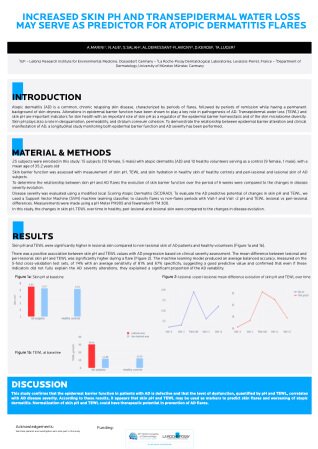L'Oréal Dermatological Beauty Pro is a digital community empowering healthcare professionals to improve their daily practice of dermatology through cutting-edge research, science and education on skin and hair care.
Increased skin pH and transepidermal water loss may serve as predictor for Atopic Dermatitis flares
A. Marini, N. Aue, S. Salah, AL. Demessant-Flavigny, D. Kerob, TA. Luger
- 10min
- Jul. 2023
- Supported by

INTRODUCTION
Atopic dermatitis (AD) is a common, chronic relapsing skin disease, characterized by periods of flares, followed by periods of remission while having a permanent background of skin dryness. Alterations in epidermal barrier function have been shown to play a key role in pathogenesis of AD. Transepidermal water loss (TEWL) and skin pH are important indicators for skin health with an important role of skin pH as a regulator of the epidermal barrier homeostasis and of the skin microbiome diversity. Skin pH plays also a role in desquamation, permeability, and stratum corneum cohesion. To demonstrate the relationship between epidermal barrier alteration and clinical manifestation of AD, a longitudinal study monitoring both epidermal barrier function and AD severity has been performed.
